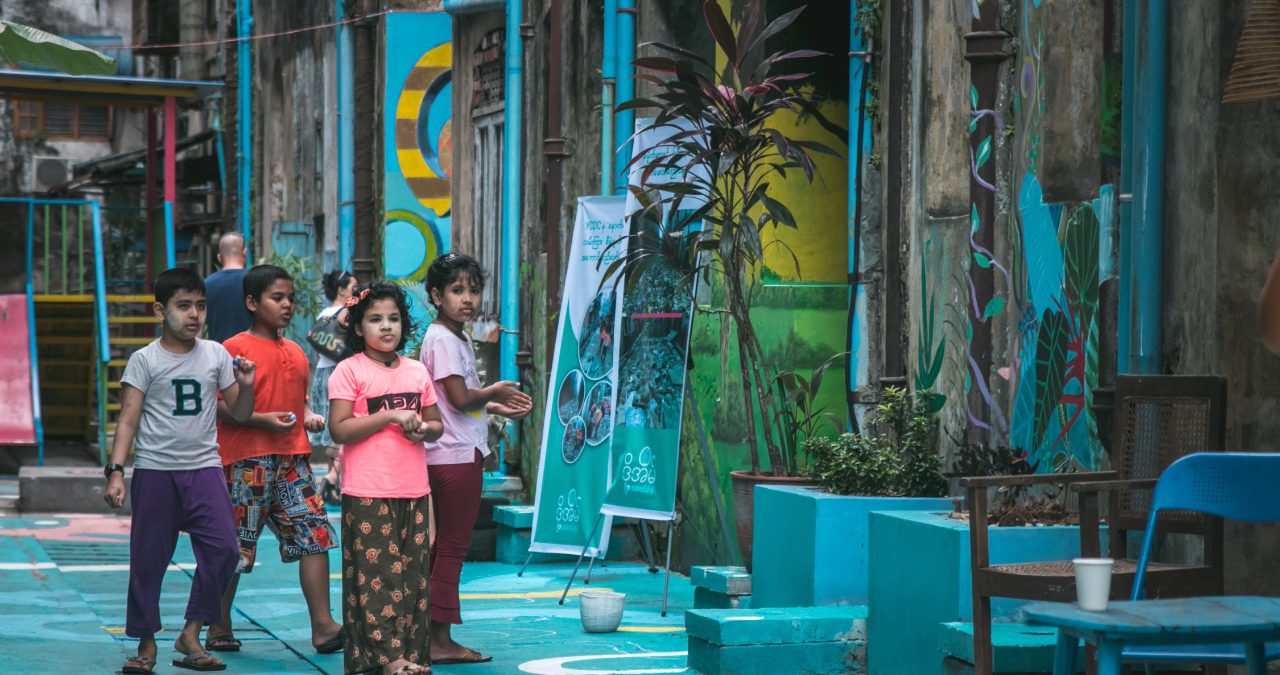
Keep up with our latest news and projects!

Some projects aren’t long-planned and strategised, they just unfold. The Alley Garden project is such an example. It started when a group of us — young, local and expatriate residents in Yangon — decided to set up a small permaculture garden. At that point, we were an informally organised group of volunteers worried about the lack of public space, the government’s focus on cars, the absence of provisions for pedestrians and cyclists, and the destruction of heritage buildings in favour of new shiny condominiums.
When we failed to find a suitable plot of land for our permaculture garden anywhere near downtown, we began considering the back alley space behind the site of one of our heritage restoration projects. Like all back alleys in Yangon, this was a smelly place filled with two feet of trash. Yet after some deliberation, we thought, why not start here? Despite its flaws, it was nearby, ‘free’ and it allowed us to experiment.
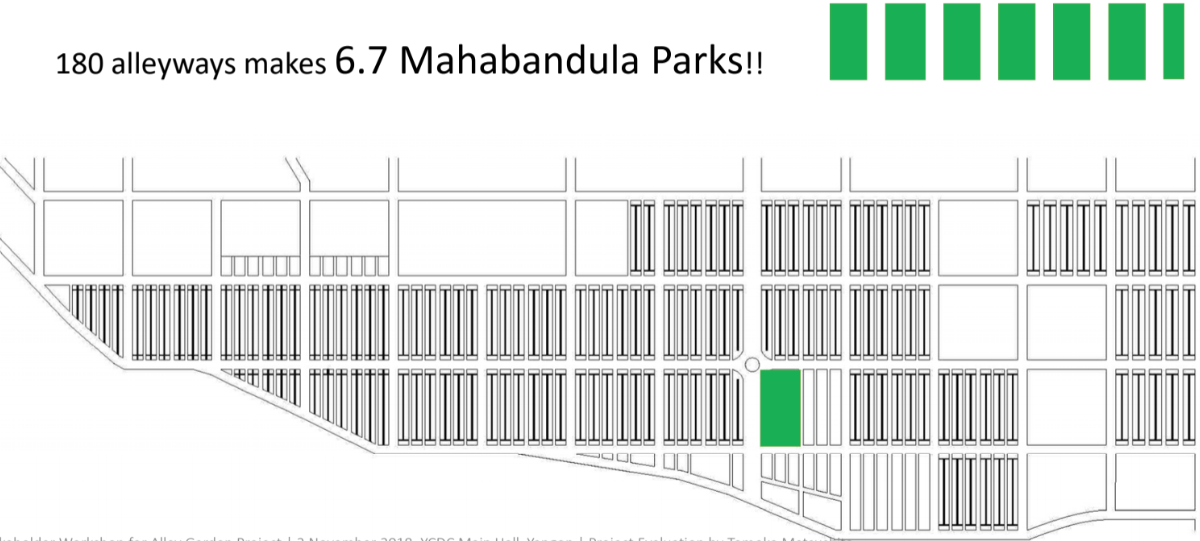
About Yangon’s Back Alleys
When the British established Yangon in 1852, a new city plan of wide roads in a grid pattern was implemented with an emphasis on proper drainage systems, to manage the area’s frequent floods. In between buildings along two parallel roads, 15-foot wide back alleys with open gutters and underground sewers were built to protect the city from disasters. Residents started using the space for unintended purposes such as relaxation, passage or to escape the city’s hot air. This pattern changed in 1962 as the dictatorial government ceased maintenance and sought to restrict people’s opportunities to gather. Yangon’s back alleys were officially closed in the 1980s. Over the next three decades, they lost their function and became little more than waste dumps in the absence of a well-functioning waste collection system.
The Tipping Point
In 2017, with a more open government and a small group of gardeners, we started cleaning the site and realised its full potential. Downtown Yangon only has one small public park, called Mahanbadoola Garden, but it has over 150 back alleys, each about 250m long and 5m wide. Some quick math told us that if we cleaned them all, we could free up another 6.7 times the surface area of Mahanbadoola Garden.
We engaged our neighbours in the idea of cleaning and transforming one back alley. Initially, people were divided, upset with the government for not providing a waste collection system, and uncertain about the project’s benefits. Only after we organised a mural painting workshop for children in the neighbourhood, which brought some colour to the freshly whitened walls, did the idea finally land. Residents saw how this could be a space for their children to play in safely. After this, the idea went truly viral. We had the mayor visiting within a few days and were able to crowd-fund $60,000 from residents, local businesses and embassies within the space of three months.
We saw this alley work as heritage preservation of a use of space in Yangon, and our organisation ‘Doh Eain’ was born with the mission to preserve cultural identity and ensure a liveable, inclusive and sustainable city. By 2020 we had completed eleven Alley Garden projects throughout the downtown area.
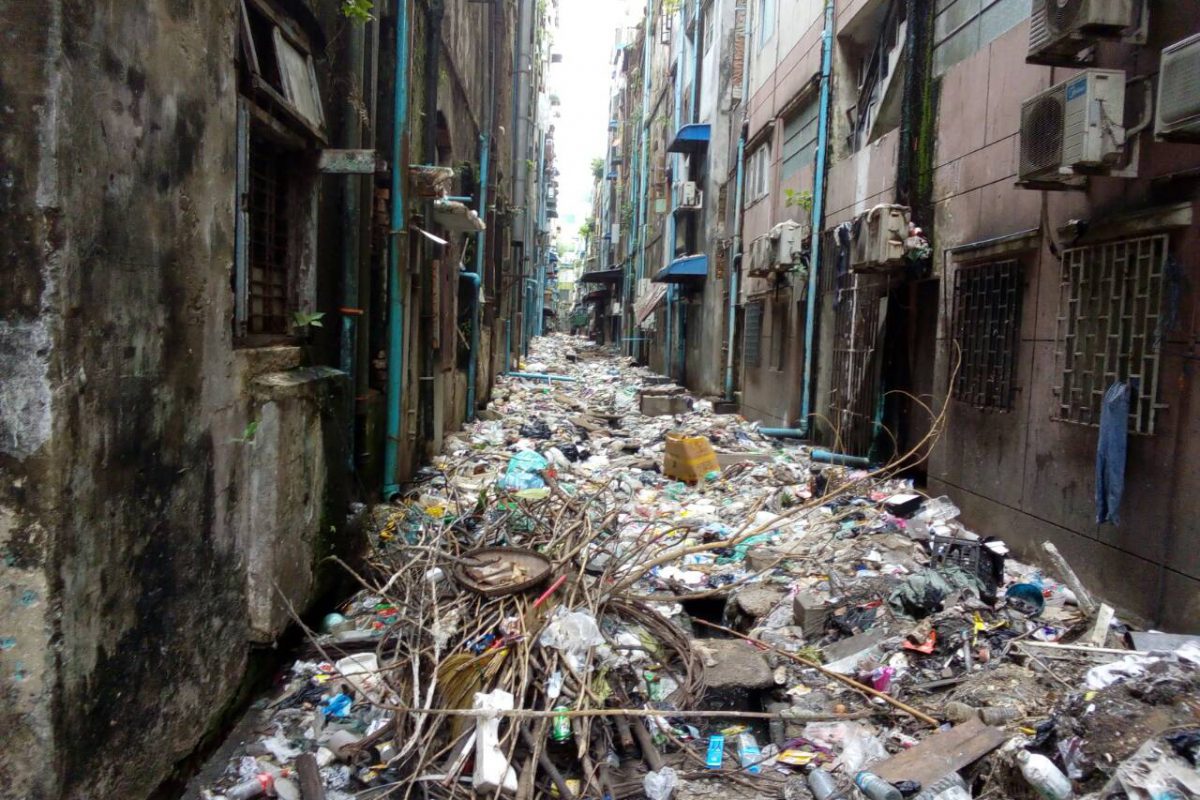
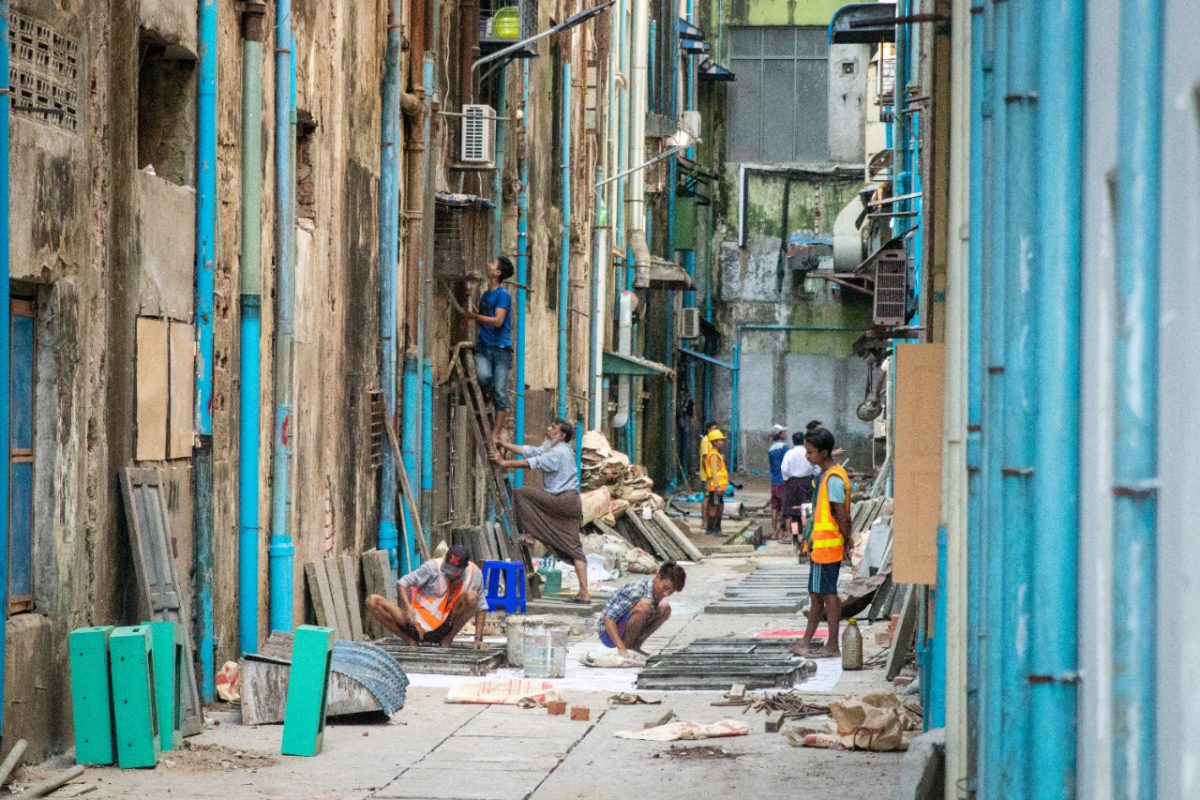
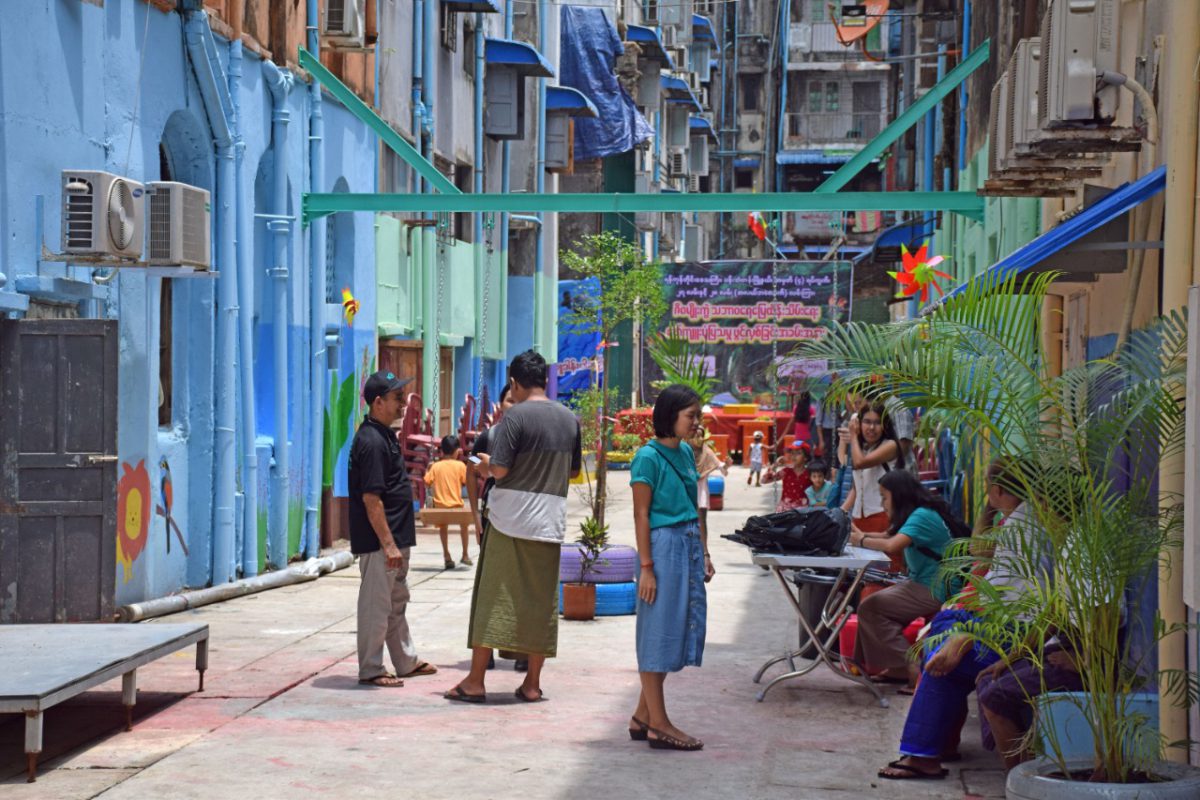
The Process
Just as with our heritage work, in which we try to prioritise the rights and roles of the original owners, we wanted the alleyway transformations to be community-led. We developed a methodology around joint research of sites, asset mappings, participatory design exercises, community building days and long-term programming and maintenance. These activities were supported by the additional revenue gained from walking tours and volunteer work impact days (see Figure 1).
An assessment of the first six transformed back alleys undertaken in 2018 revealed that they resulted in a positive overall impact by increasing the usage of the alleys from nearly zero to 50%, improving the residents’ perception of these spaces and encouraging communication among different stakeholders.
Community participation
The survey revealed that participation was mostly limited to committee members and ground floor residents — those directly affected by the improvements. This showed that potential users (residents of higher floors, businesses from nearby blocks, etc.) still needed to be persuaded of the project’s benefits.
To foster broader participation, we built in more creative ways to boost the interest of all residents. An important strategy was to undertake more pop-up style events at the beginning of each project. A limiting factor was and remains the limited accessibility of the alleyways. While all apartments are supposed to have emergency escapes into the back alleys, over time these have been neglected. The community’s limited awareness of the risk of natural disasters (which is not aligned with Yangon’s reality) means there is little initiative to repair or install emergency escapes.
To address inclusion, we started undertaking placemaking projects centred around vulnerable groups such as young women and girls. It is widely known that in Myanmar this group is less involved in decision-making and that they experience more discomfort in public space. We launched a number of girl-led placemaking projects, giving girls a platform as a form of empowerment, to illustrate how they could influence the design of public spaces. These efforts helped us understand how to better represent the voices of vulnerable people in all of our projects.
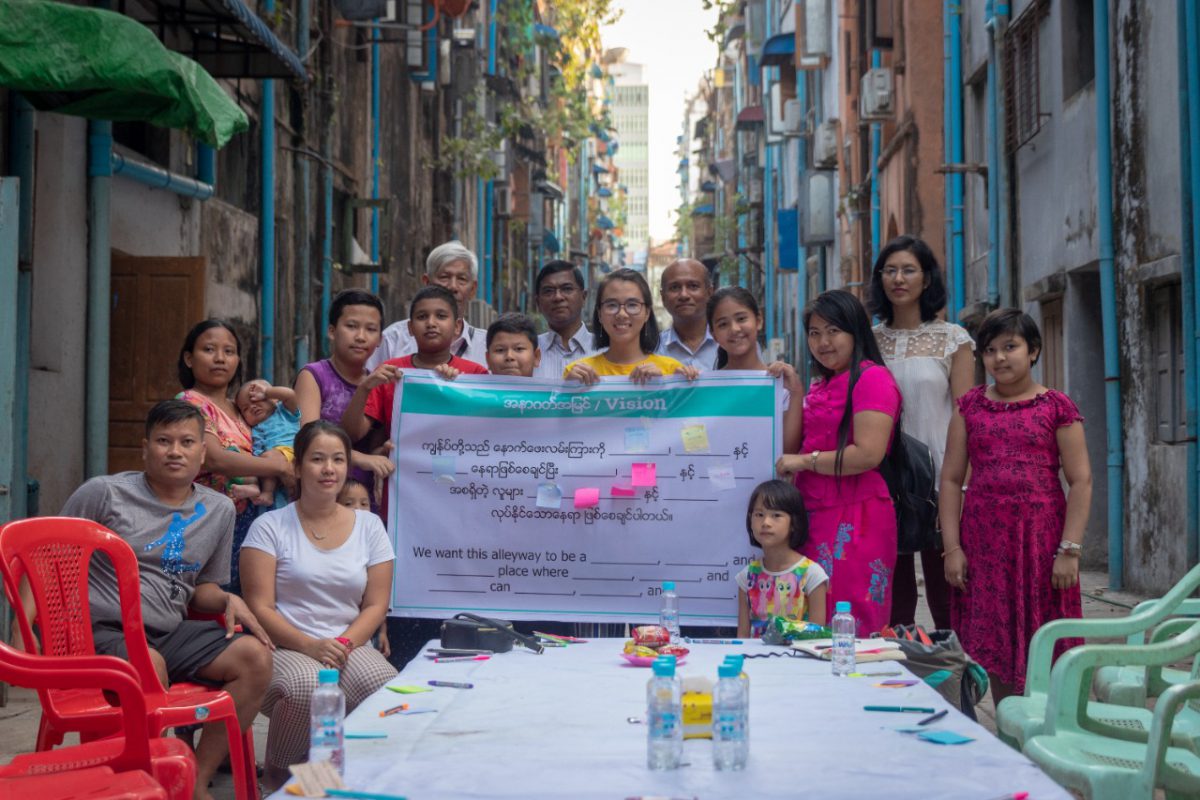
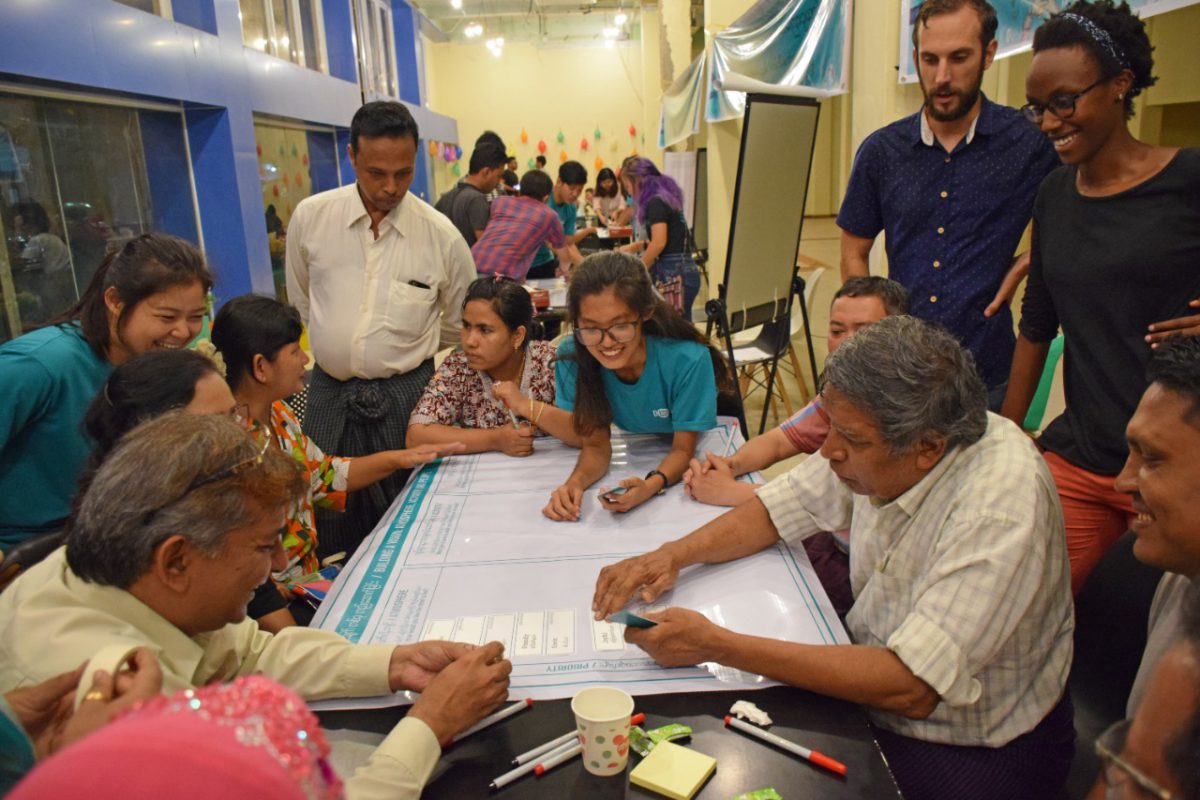
Financial sustainability
Lastly, we always seek financial sustainability. The initial funding for each Alley Garden ($60,000 of raised money) covers the costs of community engagement, design, construction and one year of maintenance. However, the gardens need ongoing upkeep and frequent upgrades. To reach those long-term goals we try to build in strategies through which the communities themselves can generate revenue. For example, we partnered up with a blockbuster movie to create an in-alley mural that served as both a classic film poster and as a social media strategy for a scavenger hunt, in return for free paint. Others have hosted corporate team-building ‘Impact Days’ for cleaning, painting and planting materials and a donation to the Alley Garden maintenance fund.
Conclusions and Going Forward
Since its inception, the Yangon Alley Garden project has brought nearly 15,000 m2 of public space back into use. The 12 different sites now feature gardens, playgrounds, street art, seating areas, exercise equipment as well as other elements influenced by local priorities. The project has also been instrumental in supporting Yangon residents’ civic engagement and sense of ownership over the public realm — which after 60 years of dictatorship had understandably weakened. It has also been the foundation on which we have built skills and experiences to approach other types of spaces such as streets and playgrounds.